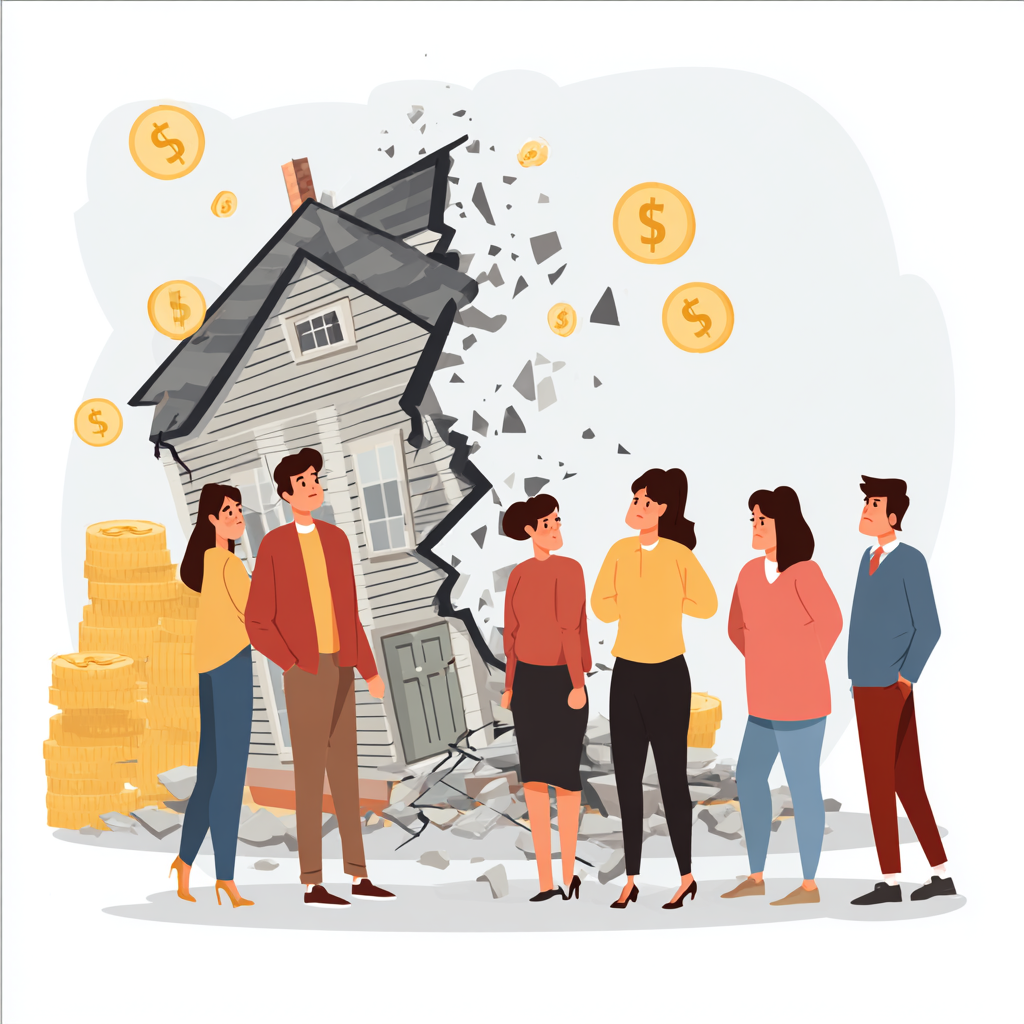The Hidden Risk That Could Destroy Your Rental Investment
Picture this: Your resident's washing machine hose bursts while they're at work, flooding not just their unit but three apartments below. The damage spreads through walls, destroys personal property, and renders multiple units uninhabitable. Without proper property damage liability coverage, you're facing hundreds of thousands in repair costs, legal fees, and lost rent—potentially enough to bankrupt your entire investment.
Property damage liability coverage isn't just another insurance line item to grudgingly accept. It's the critical barrier between your rental business and the cascading financial disasters that resident-caused damage can trigger. Yet most property owners remain dangerously confused about what this coverage actually protects, how it differs from other policies, and why traditional approaches leave massive gaps in protection.
In this comprehensive guide, we'll explore:
- What property damage liability coverage actually protects
- Critical incidents covered and dangerous exclusions
- How it differs from general liability and property insurance
- Legal requirements and risk management strategies
- Modern solutions like Beagle that eliminate coverage gaps
Understanding Property Damage Liability Coverage
What Property Damage Liability Actually Covers
Property damage liability coverage protects against financial losses when your resident's actions damage someone else's property—not yours. This crucial distinction confuses many landlords who assume their property insurance handles all damage scenarios.
Core Coverage Areas:
- Water damage spreading to neighboring units
- Fire damage extending beyond the rental unit
- Structural damage affecting common areas
- Damage to other residents' personal property
- Landscaping or exterior damage to adjacent properties
- Common area fixtures and equipment damage
The coverage specifically addresses third-party claims, meaning damage to property you don't own. When your resident's negligence harms neighboring units, common areas, or other people's belongings, property damage liability steps in to cover repair costs and legal defense.
Real-World Scenarios Covered:
- Overflowing bathtub damaging units below
- Kitchen fire spreading to adjacent apartments
- Fallen furniture breaking lobby windows
- Improper disposal damaging building systems
- Moving damage to elevators or hallways
- Guest vehicles damaged by resident negligence
These incidents can trigger claims reaching six figures, especially in multi-family properties where damage cascades through multiple units.
The Mechanics of Coverage
Understanding how property damage liability works helps maximize protection:
Claims Process Flow:
- Incident occurs causing third-party damage
- Affected parties file claims against responsible party
- Insurance company investigates liability
- Legal defense provided if necessary
- Settlement or judgment paid up to policy limits
- Subrogation rights pursued against resident
The coverage operates on an occurrence basis, meaning each incident has its own limit regardless of how many parties suffer damage.
Common Exclusions That Create Dangerous Gaps
Every property damage liability policy contains exclusions that leave landlords exposed:
Standard Exclusions:
- Intentional damage by residents
- Gradual deterioration or maintenance issues
- Mold and fungus-related damage
- Pest infestation damage
- Pollution and contamination
- Business property damage
- Auto-related incidents
- Professional services liability
The Intentional Acts Problem: Most policies exclude intentional damage, but determining intent proves complicated. If a resident deliberately breaks something in anger, coverage might be denied even if spreading damage was unintentional.
Maintenance vs. Negligence: Insurers often deny claims by arguing damage resulted from poor maintenance rather than sudden accidents. This gray area creates significant coverage uncertainty.
Vacancy Exclusions: Many policies restrict or eliminate coverage after 30-60 days of vacancy, leaving properties vulnerable during turnover periods.
How Property Damage Liability Differs from Other Coverage
Property Damage Liability vs. General Liability
These coverages protect against different risks despite similar names:
General Liability Insurance:
- Covers bodily injury to third parties
- Includes personal injury (defamation, false arrest)
- Provides products/completed operations coverage
- Covers advertising injury claims
- Includes medical payments coverage
Property Damage Liability:
- Specifically covers third-party property damage
- Focuses on resident-caused incidents
- Addresses spreading damage scenarios
- Covers neighboring property damage
- Includes damage to common areas
While general liability might include some property damage coverage, it typically focuses on slip-and-fall injuries and similar bodily harm claims rather than extensive property damage from resident negligence.
Property Damage Liability vs. Property Insurance
The distinction between these coverages creates confusion:
Property Insurance Covers:
- Damage to your own building
- Your owned equipment and fixtures
- Loss of rental income
- Rebuilding costs
- Your property only
Property Damage Liability Covers:
- Damage to others' property
- Third-party claims
- Legal defense costs
- Spreading damage
- Liability settlements
This fundamental difference means you need both coverages for comprehensive protection. Property insurance rebuilds your building after a fire; property damage liability covers lawsuits from neighbors whose property was damaged by the same fire.
The Renters Insurance Connection
Renters insurance includes property damage liability, but relying solely on resident policies creates problems:
Why Resident Coverage Isn't Enough:
- Policies lapse without landlord knowledge
- Coverage limits may be insufficient
- Claims require resident cooperation
- Deductibles discourage claims
- Subrogation complications
Critical Incidents and Coverage Scenarios
Water Damage: The Most Common Threat
Water damage represents the highest frequency property damage liability claim:
Typical Water Damage Scenarios:
- Burst pipes from resident negligence
- Overflowing toilets and bathtubs
- Washing machine hose failures
- Water heater ruptures
- Frozen pipe bursts
- Improper appliance installation
Water damage particularly threatens multi-family properties where water travels through floors and walls, affecting multiple units. A single incident can damage:
- Multiple residential units below
- Electrical and HVAC systems
- Structural elements requiring extensive repairs
- Personal property of multiple residents
- Common area flooring and walls
- Elevator equipment and controls
Fire Damage: Low Frequency, High Severity
While less common than water damage, fire incidents create devastating losses:
Fire Damage Patterns:
- Kitchen fires from unattended cooking
- Electrical fires from overloaded circuits
- Smoking-related fires
- Candle accidents
- Space heater incidents
- Grilling accidents on balconies
Fire damage claims often trigger multiple insurance policies:
- Property insurance for building damage
- Property damage liability for spread damage
- General liability for injury claims
- Business interruption for lost rent
- Resident insurance for personal property
Coordination between policies becomes crucial for comprehensive recovery.
Common Area and Structural Damage
Resident-caused damage to common areas creates unique challenges:
Frequent Common Area Claims:
- Elevator damage during moves
- Broken entrance doors and windows
- Damaged landscaping and irrigation
- Parking area damage
- Hallway and stairwell damage
- Amenity area destruction
These incidents affect all residents and can trigger:
- Multiple resident complaints
- Regulatory violations
- Emergency repair costs
- Accessibility issues
- Security vulnerabilities
- Reputation damage
Legal Considerations and Requirements
Landlord Liability Evolution
The legal landscape increasingly holds landlords responsible for resident-caused damage:
Expanding Liability Theories:
- Negligent supervision of residents
- Failure to maintain safe premises
- Inadequate security measures
- Environmental contamination
- Nuisance claims from neighbors
- Strict liability for certain hazards
Courts increasingly find landlords liable for "foreseeable" damage, even when caused by residents. This expansion makes comprehensive liability coverage essential.
State-Specific Requirements
Property damage liability requirements vary significantly by state:
High-Regulation States:
- California: Strict habitability standards increase liability
- New York: Extensive resident protections expand landlord duties
- Massachusetts: Security deposit limits affect damage recovery
- Oregon: Required insurance disclosures to residents
- Washington: Specific liability coverage minimums
Common Requirements:
- Minimum coverage amounts
- Additional insured requirements
- Certificate of insurance provisions
- Notice requirements for claims
- Specific policy language
Understanding local requirements ensures compliance while avoiding coverage gaps that could prove catastrophic.
Subrogation and Recovery Rights
Property damage liability involves complex subrogation issues:
Subrogation Challenges:
- Waiver of subrogation clauses
- Resident judgment-proof status
- Collection difficulties
- Cross-liability complications
- Primary vs. excess coverage disputes
Many landlords discover that even with clear resident liability, actual recovery proves impossible due to residents lacking assets or insurance. This reality makes upfront protection essential.
Traditional Approaches and Their Limitations
The Insurance Verification Nightmare
Requiring resident insurance creates operational burdens:
Verification Challenges:
- Manual tracking of hundreds of policies
- Different renewal dates and carriers
- Lapsed coverage without notice
- Fraudulent or insufficient policies
- Constant follow-up requirements
Security Deposit Insufficiency
Traditional security deposits fail to address property damage liability:
Deposit Limitations:
- Average deposits cover minor damage only
- Collection requires lengthy legal processes
- State laws limit deposit amounts
- Refund disputes damage relationships
- No coverage for third-party claims
When major damage occurs, deposits rarely cover even deductibles, leaving landlords with massive uncovered losses.
The Coverage Gap Reality
Even with resident insurance requirements and security deposits, dangerous gaps remain:
Persistent Vulnerabilities:
- Periods between policy lapses
- Insufficient coverage limits
- Excluded damage types
- Uninsured residents
- Excess damages beyond limits
These gaps leave properties exposed to catastrophic losses that insurance should prevent.
Modern Solutions for Comprehensive Protection
The Case for Liability Waivers
Property damage liability waivers revolutionize traditional protection models:
Waiver Advantages:
- Guaranteed coverage for all units
- No tracking or verification needed
- Consistent coverage limits
- Direct claims payment to landlords
- Predictable costs
Integrated Protection Strategies
Modern property protection requires multiple coordinated approaches:
Layered Protection Model:
- Primary Layer: Landlord's property damage liability insurance
- Secondary Layer: Resident liability waivers or insurance
- Tertiary Layer: Security deposit alternatives
- Support Layer: Preventive maintenance programs
- Documentation Layer: Digital evidence systems
This comprehensive approach ensures multiple barriers against financial loss.
Technology-Enabled Risk Management
Digital solutions transform property damage liability management:
Technology Benefits:
- Automated insurance verification
- Real-time coverage monitoring
- Digital claims processing
- Predictive risk analytics
- Integrated billing systems
Properties leveraging technology see fewer incidents and faster claims resolution.
How Beagle Transforms Property Damage Liability Protection
Eliminating Coverage Gaps with Guaranteed Protection
While traditional approaches leave dangerous gaps, Beagle's innovative platform ensures comprehensive protection for every unit, every day, without the administrative nightmares that plague conventional insurance requirements.
Beagle's Resident Liability Waiver program revolutionizes property damage liability protection by guaranteeing coverage regardless of individual resident compliance. This shifts the paradigm from hoping residents maintain insurance to knowing every unit has protection.
The Beagle Liability Waiver Advantage:
- Automatic $100,000 coverage per unit
- Zero verification or tracking required
- No policy lapses or coverage gaps
- Direct payment to property owners
- Coverage for all enrolled units
This approach eliminates the exhausting cycle of insurance verification while ensuring consistent protection across your entire portfolio.
Read more about Beagle’s Resident Liability Waiver.
Comprehensive Protection Beyond Traditional Limits
Beagle's integrated platform addresses property damage risks holistically:
Multi-Layer Risk Mitigation:
The Security Deposit Alternative provides additional protection while removing move-in barriers:
- Full damage protection without large deposits
- 36% faster lease conversions
- Reduced resident financial stress
- No deposit refund disputes
- Simplified accounting
Read more about Beagle’s Security Deposit Alternative.
The Pet Damage Waiver specifically addresses animal-related property damage:
- Up to $1,500 property damage coverage
- $20,000 bodily injury protection
- No breed restrictions
- Simple monthly fees
- Comprehensive risk scoring
These programs work synergistically, creating overlapping protection that traditional insurance alone cannot provide.
Read more about Beagle’s Pet Damage Waiver.
Preventing Damage Before It Happens
Beagle's proactive approach prevents property damage incidents that trigger liability claims:
The Resident Kit Prevention Features:
- Air filter delivery reducing HVAC issues by 28%
- Move-in concierge ensuring proper unit orientation
- AI-powered maintenance reminders
- 50% reduction in move-in support calls
- Digital documentation of property conditions
By preventing damage, Beagle reduces the likelihood of liability claims while improving property conditions and resident satisfaction.
Read more about Beagle’s Resident Kit here.
Financial Impact of Prevention: Properties implementing Beagle's complete platform report:
- 127% revenue growth through integrated programs
- 93% opt-in rate for resident benefits
- 22% reduction in eviction filings
- $100K+ additional annual revenue per 500 units
Streamlined Claims and Recovery
When damage does occur, Beagle simplifies the entire process:
Claims Advantages:
- Direct billing to responsible parties
- Professional claims handling
- No resident coordination required
- Fast payment processing
- Clear documentation trails
This efficiency means faster repairs, reduced downtime, and minimal impact on other residents.
Best Practices for Maximum Protection
Creating Comprehensive Protection Policies
Effective property damage liability management requires clear, comprehensive policies:
Essential Policy Components:
- Clear damage responsibility definitions
- Required coverage specifications
- Inspection and documentation procedures
- Claim reporting protocols
- Resident obligations and restrictions
Communication Strategies:
- Lease clause integration
- Move-in orientation coverage
- Regular policy reminders
- Incident response procedures
- Clear escalation paths
Properties with well-documented policies experience fewer disputes and faster claims resolution.
Documentation and Evidence Management
Proper documentation proves crucial for liability claims:
Documentation Best Practices:
- Detailed move-in inspections with photos
- Regular property condition updates
- Incident reports within 24 hours
- Witness statements when applicable
- Maintenance history tracking
Digital Documentation Advantages:
- Time-stamped evidence
- Cloud storage backup
- Easy sharing with insurers
- Searchable archives
- Automated reminders
Digital documentation systems reduce claim disputes by providing indisputable evidence of property conditions and incident timelines.
Vendor and Contractor Considerations
Third-party vendors create additional liability exposures:
Vendor Management Requirements:
- Certificate of insurance verification
- Additional insured status
- Indemnification agreements
- Proper licensing verification
- Clear scope definitions
Risk Transfer Strategies:
- Contractual indemnification
- Insurance requirements
- Performance bonds
- Warranty provisions
- Limitation of liability
Proper vendor management prevents situations where landlords become liable for contractor-caused damage.
Future Trends in Property Damage Liability
Evolving Legal Landscape
Property damage liability law continues evolving:
Emerging Trends:
- Stricter landlord liability standards
- Environmental damage inclusion
- Mental health accommodation requirements
- Climate change considerations
- Technology-related liabilities
Staying ahead of legal trends ensures continued protection as requirements change.
Insurance Industry Innovation
The insurance industry is transforming coverage approaches:
Innovation Areas:
- Usage-based pricing models
- IoT sensor risk monitoring
- Parametric insurance products
- Blockchain claims processing
- AI-powered underwriting
These innovations promise more accurate pricing and faster claims resolution.
Technology Integration
Technology will increasingly define property damage liability management:
Future Technologies:
- Predictive damage algorithms
- Automated incident detection
- Smart building integration
- Real-time risk scoring
- Automated claims processing
Properties embracing technology will enjoy superior protection at lower costs.
Common Mistakes to Avoid
Underestimating Coverage Needs
Many landlords dangerously underestimate liability exposure:
Coverage Mistakes:
- Insufficient policy limits
- Overlooking excess coverage
- Ignoring aggregate limits
- Missing specific endorsements
- Forgetting vacant period coverage
Regular coverage reviews ensure protection keeps pace with risk exposure.
Over-Relying on Resident Insurance
Depending solely on resident insurance creates vulnerabilities:
Dangerous Assumptions:
- All residents maintain coverage
- Policies provide adequate limits
- Coverage never lapses
- residents will cooperate with claims
- Subrogation will succeed
Backup protection through waivers or additional coverage ensures consistent protection.
Neglecting Prevention
Focusing solely on insurance while ignoring prevention proves costly:
Prevention Priorities:
- Regular property inspections
- Proactive maintenance programs
- Resident education initiatives
- Emergency response planning
- Vendor management systems
Prevention costs far less than claims and protects property reputation.
Conclusion: Building Bulletproof Property Protection
Property damage liability coverage represents a critical yet often misunderstood component of rental property protection. The potential for resident-caused damage to trigger cascading financial losses makes comprehensive coverage essential for sustainable property management.
Traditional approaches—requiring resident insurance, collecting security deposits, and purchasing standard liability policies—leave dangerous gaps that can devastate investment returns. The combination of poor compliance rates, insufficient coverage limits, and administrative burdens creates a perfect storm of vulnerability.
Modern solutions like Beagle's integrated platform transform this challenge into opportunity. By guaranteeing coverage through liability waivers, preventing damage through proactive programs, and generating revenue while reducing risk, forward-thinking property managers create robust protection that actually improves profitability.
The math is compelling: While comprehensive property damage liability protection might cost thousands per unit annually, Beagle's integrated programs can generate comparable revenue while providing superior protection. It's not about choosing between coverage and profitability—it's about leveraging innovative solutions that deliver both.
The properties thriving in today's market aren't just adequately insured—they're comprehensively protected through integrated strategies that turn traditional risk management into competitive advantage. They understand that the best claim is the one prevented, and the best protection combines robust coverage with proactive risk management.
Don't wait for a catastrophic loss to reveal the gaps in your property damage liability protection. Take action now to build comprehensive coverage that protects your investment while generating additional revenue.
Ready to eliminate coverage gaps while boosting your bottom line? Discover how Beagle's revolutionary platform transforms property damage liability from a cost center into a profit generator.
Schedule your Beagle demo today and join property managers who've eliminated insurance hassles while improving their NOI.
Related Resources:
Beagle is the #1 platform for property managers to launch profit-maximizing reinsurance and resident benefit programs that tenants love through our association.
Book a Demo Today






